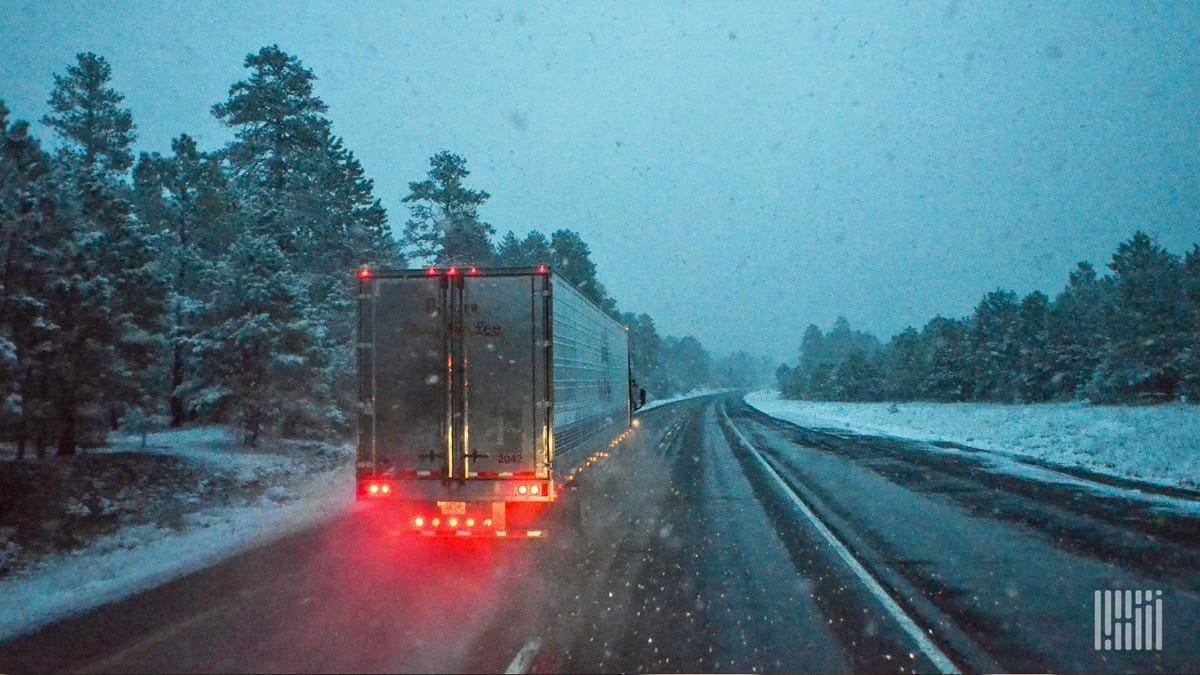Each year, trucking companies lose an estimated 32.6 billion vehicle hours due to weather-related congestion, according to the U.S. Department of Transportation. Also, an estimated 12% of total truck delays are due to weather, and the approximate cost of weather-related delays to trucking companies ranges from $2.2 billion to $3.5 billion annually.
Planning ahead for the weather is crucial to driver safety and a carrier’s bottom line. Becoming familiar with some weather vocabulary can help.
Blizzards
Individually, heavy snowfall or high winds can be extremely dangerous for truckers. Together, when they create a blizzard, they can make driving nearly impossible.
The NWS defines a blizzard as a storm that produces sustained wind or frequent gusts of 35 mph or greater, accompanied by falling and/or blowing snow, frequently reducing visibility to less than one-quarter mile for three hours or longer. If there’s snow on the ground but not falling from the sky, strong winds can still lead to blowing snow with whiteout conditions reducing visibility to nearly zero. This is called a ground blizzard.
River flooding vs. flash flooding
River flooding occurs when rivers overflow their banks or the edges of their main channels, inundating areas that are normally dry. River flooding can be caused by heavy rainfall, dam failures, rapid snowmelt and ice jams. It can wreak havoc on freight flows, as seen in the SONAR chart below. Right before major flooding was forecast to begin along the Missouri River in the Midwest in March 2019, outbound tender volumes in Omaha (OTVI.OMA) spiked a bit. Carriers were scrambling to snag loads before the water rose. Then, outbound volumes declined until the waters began to recede during the summer.

A flash flood is caused by excessive rainfall over a short period of time, generally less than six hours, and can catch drivers off guard. Cities are especially prone to flash floods due to their large amounts of concrete and asphalt surfaces that do not allow water to penetrate easily into the soil. Flash floods are usually caused by thunderstorms or slow-moving fronts.
Severe thunderstorms
Thunderstorms can be dangerous for truckers, but they’re not all cut from the same cloth. Summer “pop-up” storms typically produce heavy rainfall, and sometimes small hail. They tend to be scattered, discrete cells.
Spring and autumn storms, usually triggered by strong cold fronts, can be more unstable and widespread. They often contain abundant cloud-to-ground lightning, and they can also drop large hail and spin up tornadoes.
The National Weather Service (NWS) classifies a thunderstorm as severe if it produces one or more of the following based on radar, or eyewitness reports:
• Winds of at least 58 mph (50 knots).
• Hail at least 1 inch in diameter.
• A tornado.
Severe risk categories
Severe thunderstorm outbreaks vary in geographical span, as well as intensity. The Storm Prediction Center (SPC), part of the NWS, categorizes potential risks as marginal, slight, enhanced, moderate or high.

Deciphering weather alerts
Watch: This means there’s a potential for hazardous weather across a multicounty region. A watch is posted several hours to a few days prior to the event, providing plenty of lead time. When the NWS issues a watch, drivers should listen for further information and watch the skies for changing conditions.
Warning: This means hazardous weather that could put lives and property in danger is occurring, imminent or likely. A warning means take action! Drivers should pull off the road and get to a safe place as quickly as possible.
Advisory: This means weather conditions are not forecast to be serious enough for a watch or warning, but may cause significant inconvenience — for instance, if an area is supposed to get only a few inches of snowfall, but it’s forecast to happen during rush hour when traffic is heavy.
Click here for more FreightWaves articles by Nick Austin.
Truckers rank the most dangerous weather conditions
5 of the worst weather states for truckers
America’s most dangerous roads for truckers










